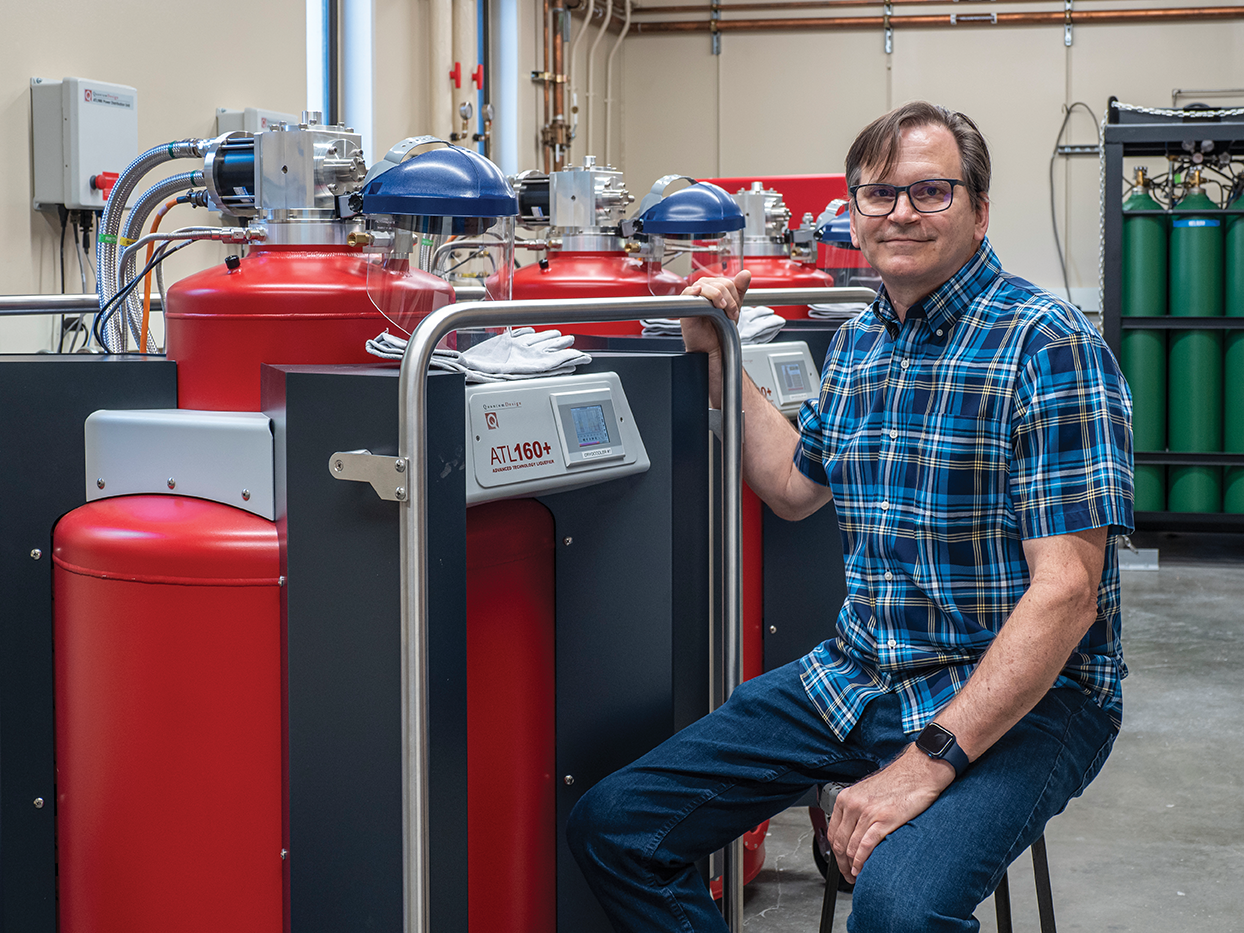
With helium prices rising, department ensures a reliable supply
Liquid helium is vital to many cutting-edge experiments but has become increasingly expensive and difficult to acquire. Its unique cooling ability — down to almost absolute zero — chills magnets for research on superconductivity, nanotechnology and particle physics. Companies also rely on liquid helium to manufacture MRI machines, semiconductors and flat-screen displays.
Peter Klavins, a research specialist in the UC Davis Department of Physics and Astronomy, has watched liquid helium prices balloon from around $5 per liter a decade ago to more than $17 per liter today. And in 2019, a global supply shortage forced scientists in the United States to ration liquid helium, he said.
Spurred by the uncertainty and price fluctuations, Klavins oversaw construction of a helium recovery system in the Physics Building to capture and recycle approximately 90% of the helium used for research. Financial support for the new Helium Lab comes from faculty research funding and a $10,000 gift from Klavins and his spouse, Distinguished Professor of Chemistry Susan Kauzlarich, along with gifts received through the department’s Liquid Helium Laboratory Fund.
Now, instead of paying $1,700 for 100 liters of liquid helium every week, research groups buy a few $200 cylinders of helium gas each month. The new facility can liquefy up to 500 liters per week. “This will pay for itself,” Klavins said. “I’m proud of it.”
The recovery system also advances the College’s commitment to sustainability, Klavins noted. Helium gas is a nonrenewable resource — a product of natural radioactive decay — extracted from natural gas fields. When released into the air, helium escapes Earth’s gravity and is forever lost to outer space.
— Becky Oskin, content strategist in the College of Letters and Science, wrote this article for the fall 2021 issue of Letters & Science Magazine.

